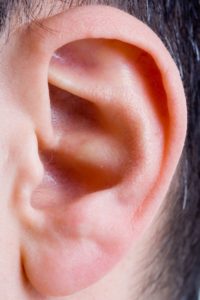 As we mentioned a couple of weeks ago, a colleague of mine decided that he wanted to conduct some research on the daith piercing among individuals who have sought out the piercing for migraine relief.
As we mentioned a couple of weeks ago, a colleague of mine decided that he wanted to conduct some research on the daith piercing among individuals who have sought out the piercing for migraine relief.
As someone who has written numerous blogs on the subject, I wanted to help spread the word about the study, and of course I am interested in the results. So if you have a daith piercing and you haven’t take the survey yet, please click here to take it!
Daith Piercing Survey
Although the study is still in the collection phase, Dr. Chris Blatchley of the London Migraine Clinic was kind enough to share some of the early findings from the survey. We thought it would be interesting to share some of those findings with you before the results are really broken down and trends are discovered. So below, you’ll see some findings from the early batch of responses to the daith study.
- The vast majority of respondents have had the piercing for 18 months or fewer. This is likely due to the fact that the daith piercing has only recently gained popularity in the pain care/migraine community.
- Of the 50 or so respondents who have had migraines for over 10 years and had the daith piercing for over one year, 38 percent reported having migraines most days and only two percent said they had gone a month with one or fewer migraines. Since getting the piercing, only six percent report migraines on most days, and a whopping 69% say their migraines have been reduced to one or fewer a month.
- The general consensus is that the majority of individuals who underwent the daith piercing procedure for migraine relief showed marked improvement in all modalities, although it is worth nothing that for a small percentage of individuals, their migraines got worse after the piercing.
These early results are interesting, and although this is only a surface level interpretation, we’re intrigued by the results. There are some obvious limitations in that the survey relies not only on self-reporting, but also self-reporting pain levels from years ago. However, the survey is certainly a huge step in the right direction for understanding pain pathways and harnessing the power of the daith piercing for the right patient.
One final thing we hope to glean from the study is a better understanding of the placebo effect on patients who undergo the procedure. Is their pain truly being resolved because it is helping stop the transmission of pain signals, or are people experiencing better results simply because they expect to? It’s a fascinating angle, but when you consider that the placebo effect has not been shown to be as effective in other medical interventions, it certainly seems like there is a credible link between the piercing and migraine relief in some individuals!
We’ll keep tabs on the survey as it continues, and be sure to take the survey if you haven’t yet!